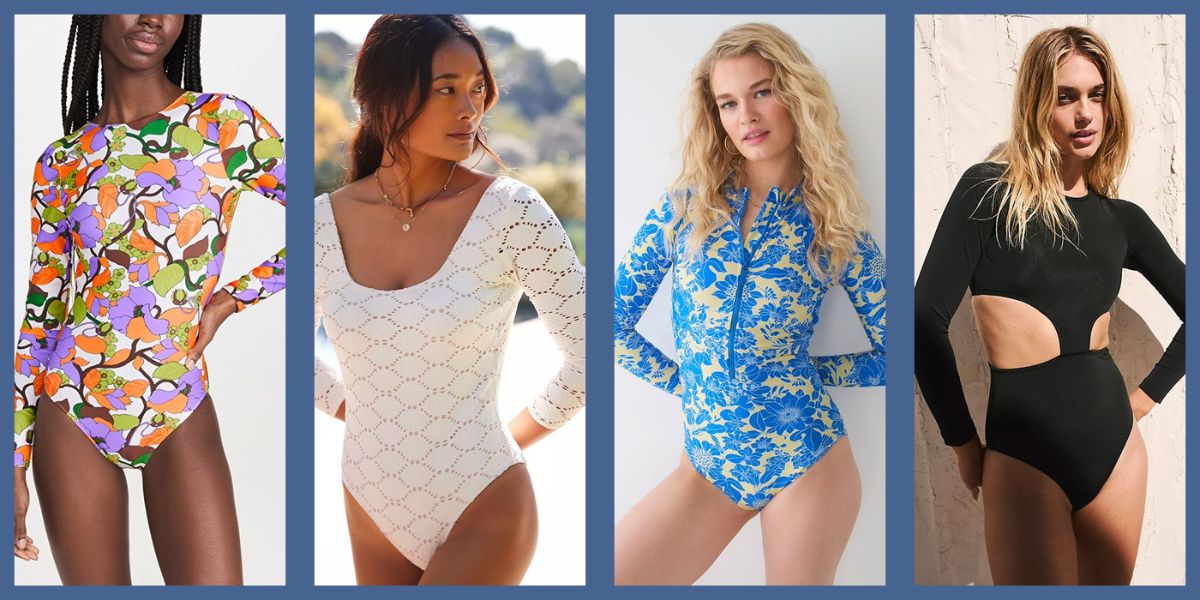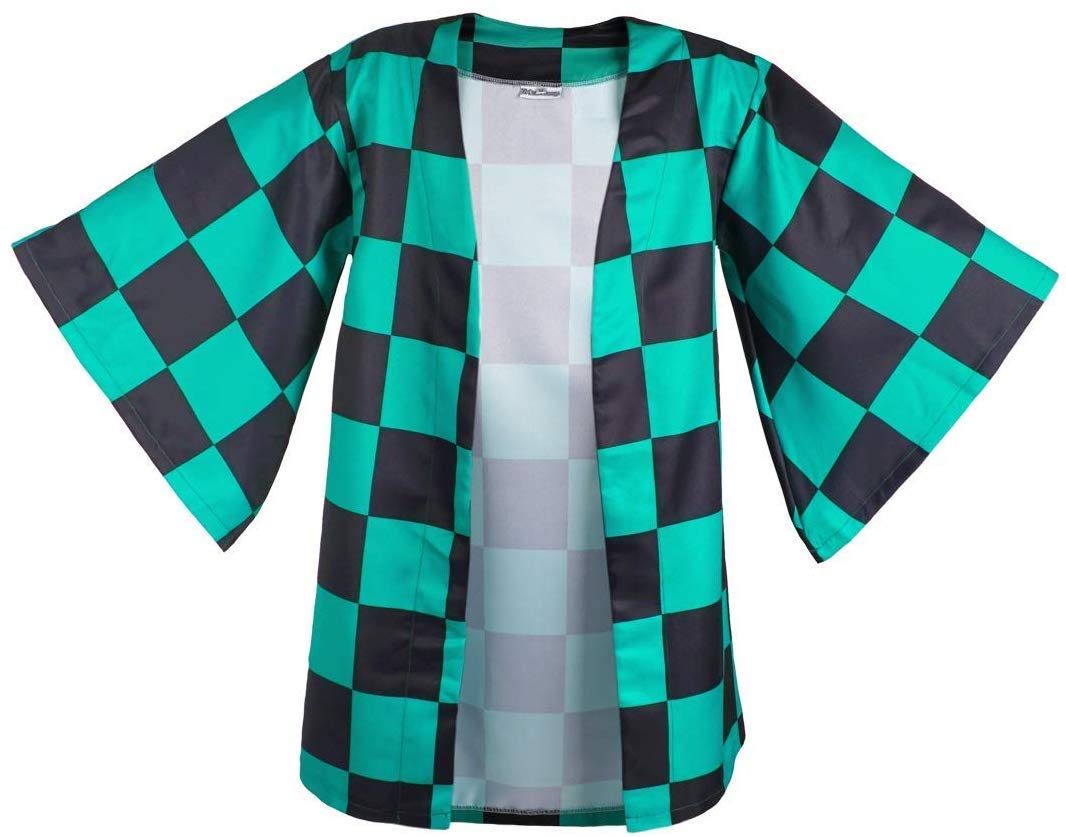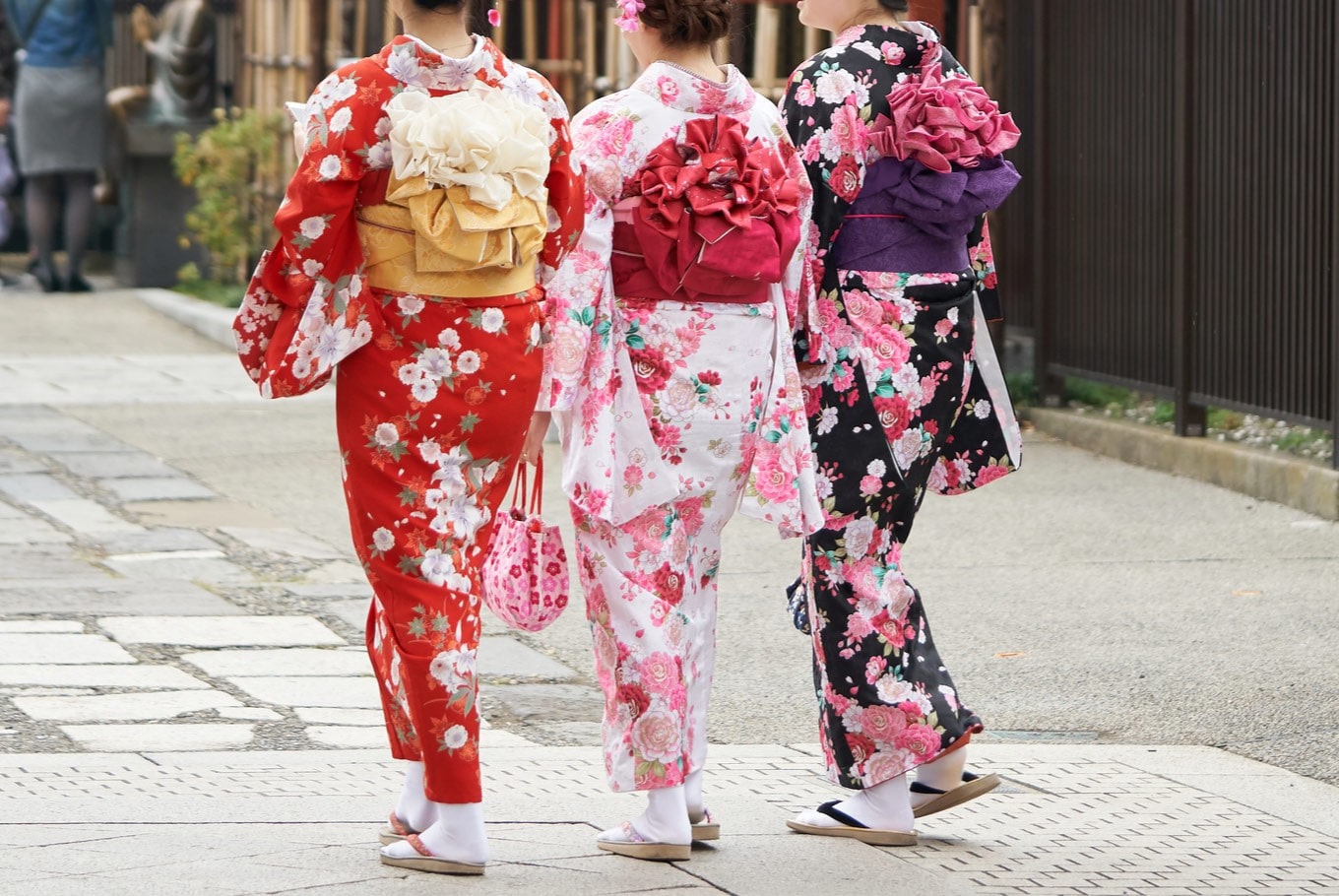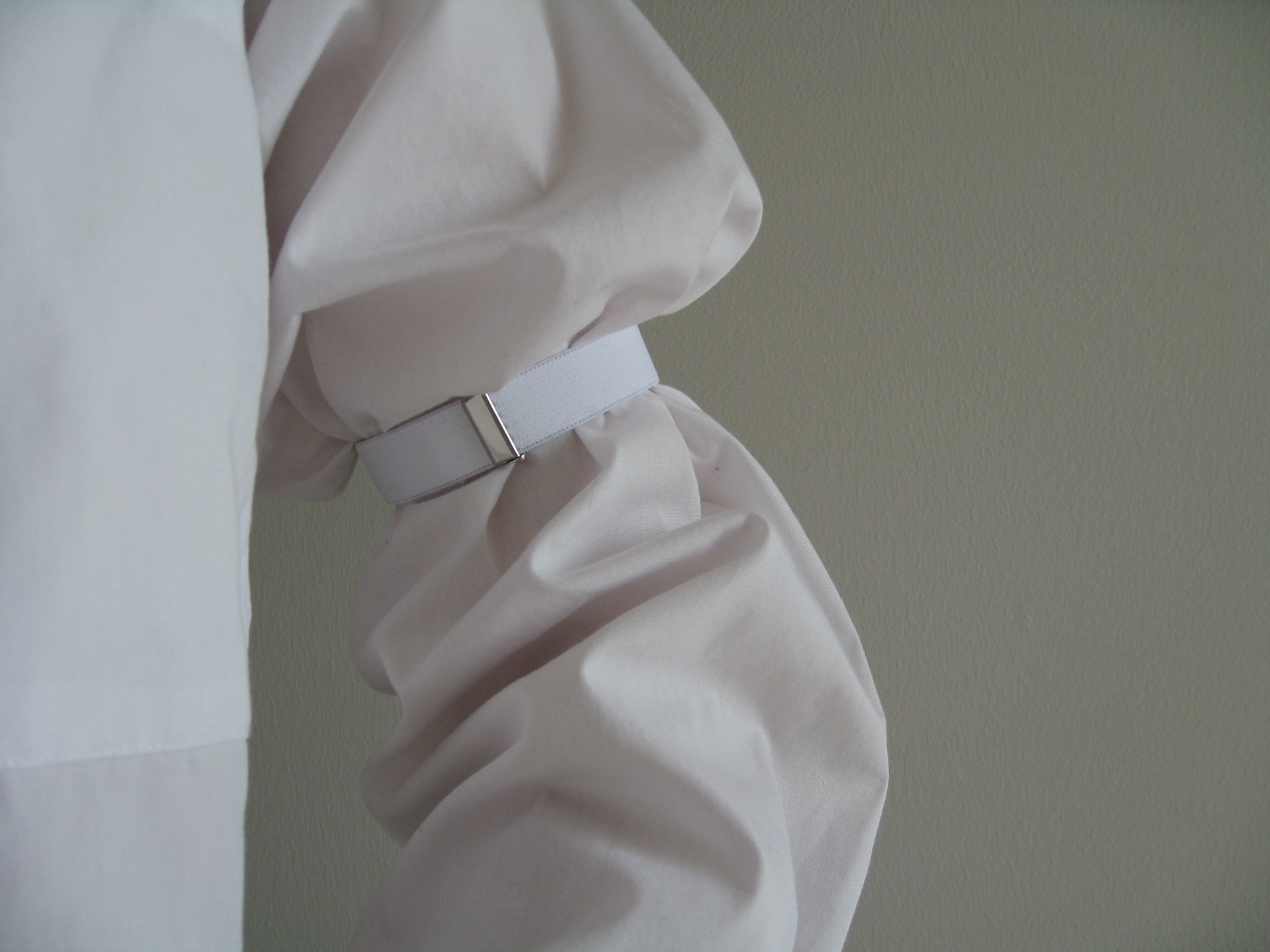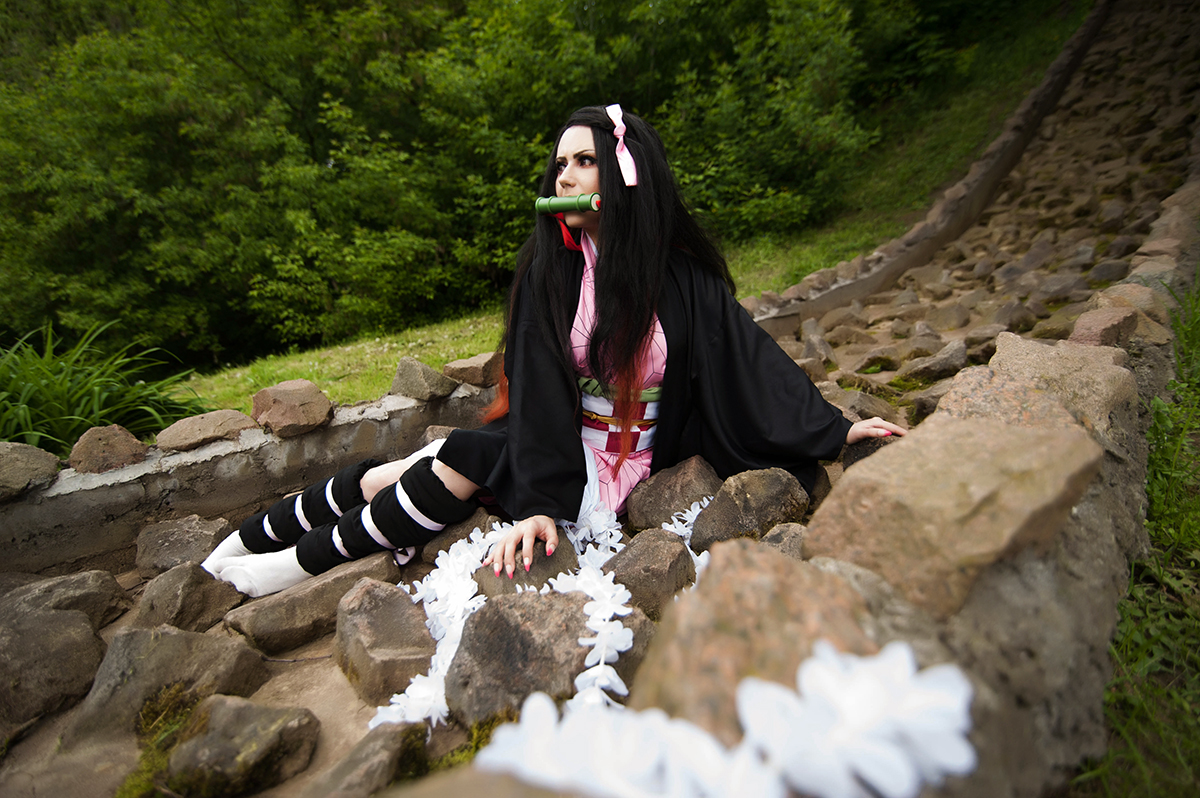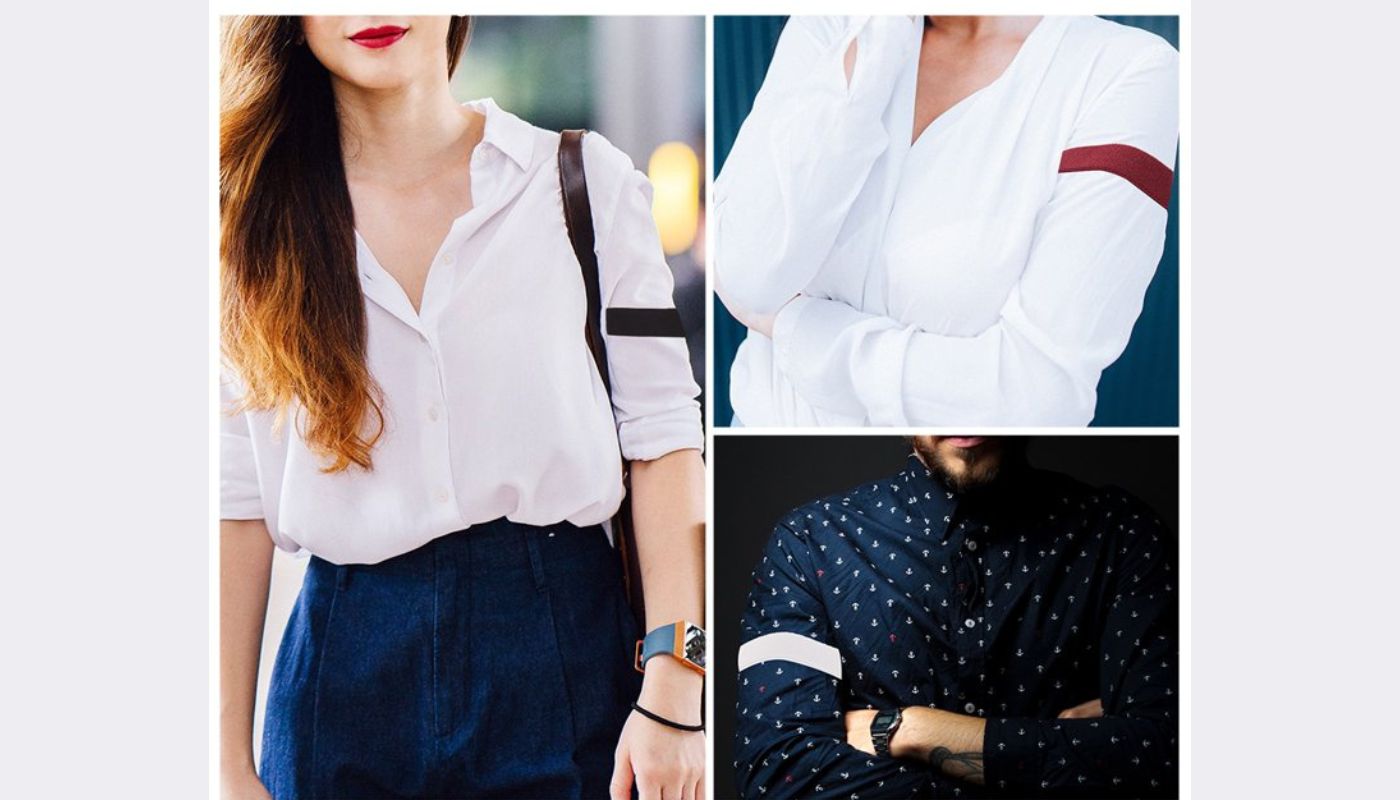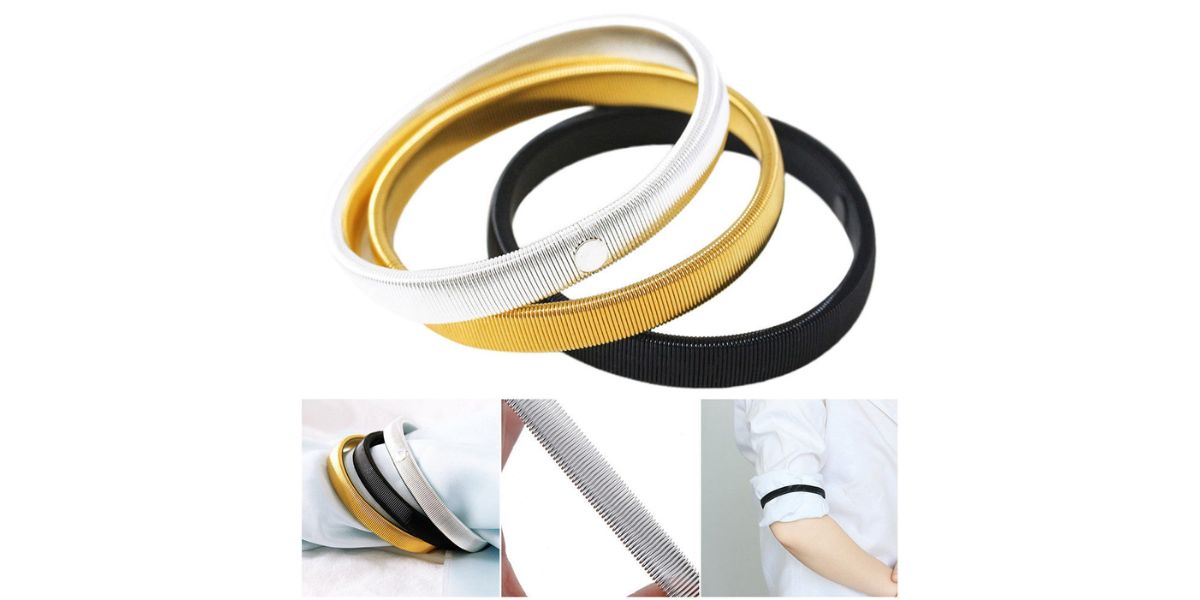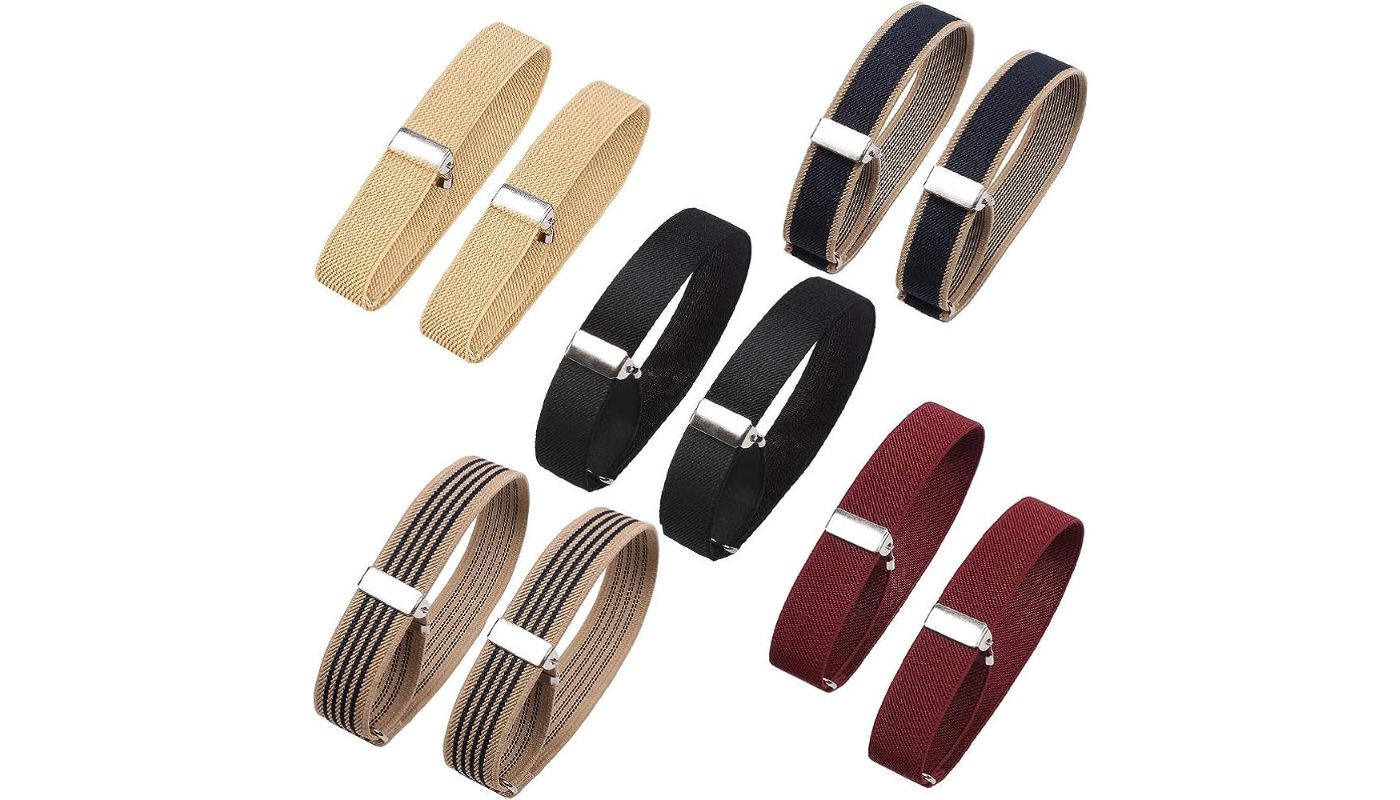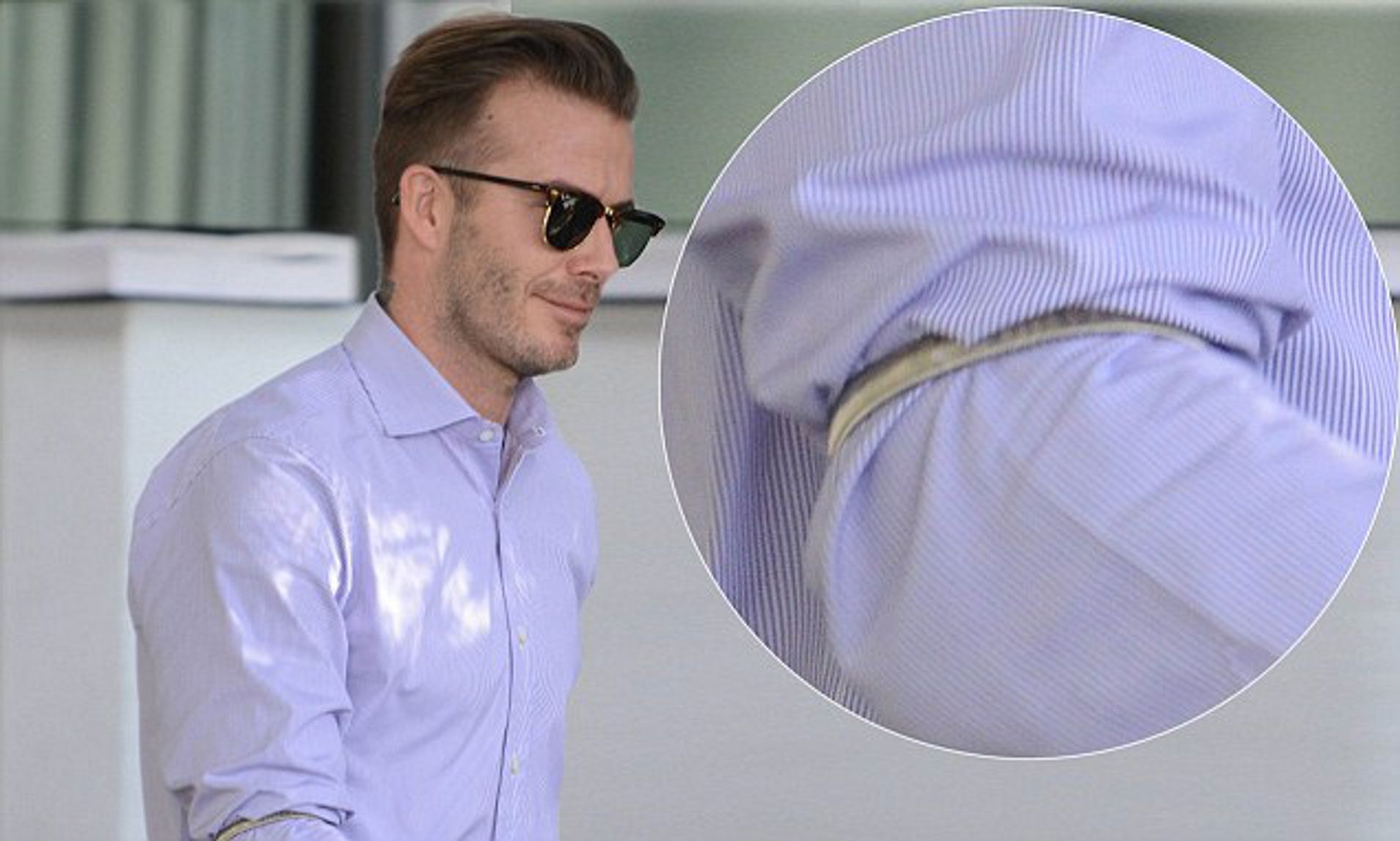

FAQs
What Is Kimono Sleeve
Modified: August 2, 2023
Learn all about kimono sleeves and their unique style. Find answers to general questions about kimono sleeves and how to wear them.
(Many of the links in this article redirect to a specific reviewed product. Your purchase of these products through affiliate links helps to generate commission for Under-tec.com, at no extra cost. Learn more)
Table of Contents
Introduction
The kimono sleeve is a unique and distinct style that has captivated the fashion world for centuries. It is characterized by its wide and flowing shape, reminiscent of traditional Japanese kimonos. While originally associated with Japanese culture, the kimono sleeve has now become a popular design element in contemporary fashion, transcending cultural boundaries.
The allure of the kimono sleeve lies in its graceful drape and wide range of design possibilities. This sleeve style adds elegance and sophistication to any garment, whether it’s a blouse, dress, or even a jacket. The versatility of the kimono sleeve allows it to be incorporated into various fashion trends and styles, making it a perennial favorite among designers and fashion enthusiasts alike.
With its loose and airy silhouette, the kimono sleeve offers a comfortable and relaxed fit, perfect for both formal and casual occasions. It provides freedom of movement while exuding a sense of effortless style. Whether you want to make a bold statement or achieve a more understated look, the kimono sleeve can be customized to suit your personal taste and fashion preferences.
In this article, we will delve into the fascinating world of kimono sleeves. We will explore their origins, design characteristics, and how they have evolved over time. We will also provide fashion tips on how to wear kimono sleeves to enhance your overall style. So, let’s embark on this journey to unravel the beauty and elegance of the kimono sleeve.
Definition of Kimono Sleeve
The kimono sleeve is a style of sleeve that takes inspiration from the traditional Japanese garment known as the kimono. It is characterized by its wide and flowing shape, which drapes elegantly from the shoulder to the wrist or elbow, depending on the length of the sleeve. The defining characteristic of the kimono sleeve is its absence of a traditional armhole seam, allowing for a seamless and continuous line from neckline to sleeve.
The word “kimono” itself translates to “thing to wear” in Japanese, and it refers to a traditional Japanese garment that has been worn for centuries. The kimono sleeve draws on the aesthetic and design elements of the kimono, specifically its loose and relaxed silhouette. However, the kimono sleeve is not limited to traditional Japanese fashion and has found its way into contemporary clothing designs around the world.
One of the key features of the kimono sleeve is its ability to add a touch of elegance and femininity to any outfit. Its wide and flowing shape creates a sense of grace and movement, making it a popular choice for formal occasions or when a more dramatic sleeve design is desired. The loose fit of the kimono sleeve also provides a comfortable and relaxed feel, allowing for ease of movement.
Moreover, the kimono sleeve offers a versatile canvas for designers to experiment with different fabrics, prints, and embellishments. It can be tailored to suit various garment types, such as dresses, blouses, or even jackets. The length of the kimono sleeve can vary, with options ranging from full-length sleeves that reach the wrists to shorter sleeves that stop at the elbows.
In summary, the kimono sleeve is a style of sleeve that takes inspiration from the traditional Japanese kimono. It is characterized by its wide and flowing shape, seamless design, and ability to add elegance and femininity to any outfit. Whether you’re looking for a statement sleeve or a comfortable and stylish option, the kimono sleeve offers a versatile choice for fashion enthusiasts worldwide.
Historical Background of Kimono Sleeve
The kimono sleeve has a rich and storied history that dates back to ancient Japan. The kimono, from which the sleeve takes its inspiration, is a traditional Japanese garment that has been worn for centuries. It represents not only a piece of clothing but also an embodiment of Japanese culture, artistry, and craftsmanship.
The origins of the kimono can be traced back to the Nara period (710-794) in Japan. The early versions of the kimono were simple, straight-cut garments with narrow sleeves. However, it was during the Heian period (794-1185) that the kimono underwent significant changes and gained the distinct wide and flowing sleeves that are characteristic of the kimono sleeve we know today.
During the Heian period, the kimono became an essential garment for the nobility and aristocracy. It was seen as a symbol of status and refinement, with the quality of the fabric, craftsmanship, and design reflecting the wearer’s social standing. The wide sleeves of the kimono, known as “furisode,” were particularly favored by young unmarried women and were often adorned with intricate patterns, embroidery, and vibrant colors.
As time passed, the kimono and its distinctive sleeves continued to evolve. Different sleeve variations emerged, such as the “tomesode” with its shorter sleeves, which became popular among married women. The aesthetics of the kimono sleeve also changed depending on the era and regional influences.
During the Edo period (1603-1868), the kimono sleeve underwent further modifications. The increasing popularity of the tea ceremony led to the emergence of the “uchikake” kimono, which featured even wider and more voluminous sleeves. These extravagant sleeves were often decorated with intricate embroidery, gold leaf accents, and rich patterns.
In modern times, the kimono sleeve has transcended its traditional Japanese roots and has become a global fashion phenomenon. It has been incorporated into contemporary designs by fashion designers worldwide, who have embraced the elegance and versatility of the kimono sleeve.
The historical background of the kimono sleeve not only showcases its evolution as a garment but also highlights its cultural significance in Japanese society. Today, the kimono sleeve continues to captivate fashion enthusiasts with its timeless beauty and ability to add a touch of grace and sophistication to any outfit.
Design and Characteristics of Kimono Sleeve
The kimono sleeve is known for its distinctive design and unique characteristics that set it apart from other sleeve styles. Its wide and flowing shape creates a striking visual impact and adds a touch of elegance to any garment. Let’s delve into the design elements and characteristics that define the kimono sleeve.
One of the key features of the kimono sleeve is its wide and loose fit. Unlike a traditional fitted sleeve, the kimono sleeve extends from the shoulder to the wrist or elbow with ample room for movement. This loose fit not only provides comfort but also adds a sense of grace and sophistication to the overall silhouette.
The absence of a traditional armhole seam is another distinguishing characteristic of the kimono sleeve. This seamless construction creates a continuous line from the neckline to the sleeve, enhancing the fluidity and drape of the sleeve. It gives the illusion of a sleeve that seamlessly merges with the body of the garment, adding to its overall aesthetic appeal.
While the traditional kimono sleeve is often full-length, reaching all the way to the wrists, there are variations in sleeve length to cater to different preferences and styles. Some kimono sleeves may extend to the elbows, creating a more casual and relaxed look. The length of the kimono sleeve can also vary depending on the garment type and occasion.
Another characteristic of the kimono sleeve is its versatility in terms of fabric and design. It can be crafted from a variety of materials, including silk, cotton, linen, and more. The choice of fabric can greatly impact the overall look and feel of the sleeve, ranging from luxurious and ornate to lightweight and breezy.
Design details such as pleats, ruffles, or intricate embroidery can be incorporated into the kimono sleeve to add visual interest and texture. These additional embellishments further enhance the elegance and sophistication of the sleeve.
The kimono sleeve is not limited to a specific neckline or silhouette. It can be paired with various necklines, from high necks to plunging V-necks, allowing for endless possibilities in terms of garment styles. Whether it’s a dress, blouse, or jacket, the kimono sleeve brings a touch of drama and flair to any design.
Overall, the design and characteristics of the kimono sleeve make it a distinctive and versatile style that adds a touch of elegance and sophistication to any garment. Its wide and flowing shape, seamless construction, comfortable fit, and ability to be customized with different fabrics and design elements make it a perennial favorite in the world of fashion.
Variations of Kimono Sleeve
The kimono sleeve, with its wide and flowing shape, offers a canvas for creativity and experimentation. Over the years, designers have developed various variations of the kimono sleeve, each with its own unique twist and style. Let’s explore some of the popular variations of the kimono sleeve that have emerged in the fashion world.
1. Bell Sleeve: The bell sleeve is a variation of the kimono sleeve characterized by its flared shape, resembling the shape of a bell. It starts narrow at the shoulder and expands towards the wrist or elbow, creating a dramatic flared silhouette. The bell sleeve adds a touch of bohemian flair to any outfit.
2. Bishop Sleeve: The bishop sleeve is another variation of the kimono sleeve that features a full-length sleeve with voluminous gathers at the shoulder and a tapered fit towards the wrist. This style creates a bishop-like shape, hence the name. The bishop sleeve adds a touch of romance and femininity to any garment.
3. Flutter Sleeve: The flutter sleeve is a shorter variation of the kimono sleeve that extends from the shoulder to the upper arm or elbows. It is characterized by its loose and flouncy shape, resembling the delicate wings of a butterfly. The flutter sleeve adds a playful and whimsical touch to any design.
4. Petal Sleeve: The petal sleeve is a unique variation of the kimono sleeve that features overlapping layers, reminiscent of petals. The layers can be short or long, creating a striking visual effect. The petal sleeve is often used in more formal or bridalwear designs, adding a touch of romance and sophistication.
5. Cape Sleeve: The cape sleeve is a dramatic variation of the kimono sleeve that extends beyond the shoulder, resembling a cape. It adds a sense of drama and grandeur to any outfit and is often used in eveningwear or statement pieces. The cape sleeve exudes a regal and powerful presence.
These are just a few examples of the variations of the kimono sleeve that designers have incorporated into their collections. However, the possibilities are endless, and designers continue to push the boundaries of creativity when it comes to the kimono sleeve. Whether it’s a modern interpretation or a traditional twist, each variation adds its own unique charm and style to the timeless beauty of the kimono sleeve.
Modern Interpretations of Kimono Sleeve
The kimono sleeve continues to inspire and influence contemporary fashion, as designers put their own modern spin on this timeless silhouette. With its versatility and ability to enhance any garment, the kimono sleeve has found its place in a wide range of fashion styles and interpretations.
One modern interpretation of the kimono sleeve is through the fusion of traditional and Western influences. Designers often combine elements of the kimono sleeve with Western silhouettes and fabrics, creating a unique blend of cultures. This fusion allows for the incorporation of the kimono sleeve into everyday wear, making it accessible and wearable in various settings.
Contemporary fashion designers also experiment with innovative cuts and shapes to reinvent the kimono sleeve. They play with asymmetrical designs, exaggerated lengths, and unexpected proportions to create statement-making sleeves that draw attention and make a bold fashion statement.
Moreover, the kimono sleeve is no longer limited to formal occasions or traditional garments. It can be seen in casual wear, such as loose-fitting tops, bohemian-inspired dresses, and even streetwear styles. The adaptability of the kimono sleeve allows it to be incorporated into a wide range of designs, giving individuals the opportunity to incorporate this elegant feature into their everyday wardrobe.
With the increasing focus on sustainability and ethical fashion, the kimono sleeve has also found its place in eco-friendly designs. The loose and flowing shape of the sleeve lends itself well to comfortable and relaxed garments made from sustainable fabrics, promoting a more conscious approach to fashion.
The kimono sleeve has also made waves in the bridal industry, where it adds a touch of romance and elegance to wedding gowns. Whether it’s a full-length sleeve or a shorter flutter sleeve, the kimono-inspired design adds a unique and sophisticated flair to bridal fashion.
Additionally, the influence of the kimono sleeve extends beyond clothing. It can be observed in accessories, such as handbags and shoes, where the wide and draped shapes create visually interesting and dynamic designs.
Overall, the modern interpretations of the kimono sleeve reflect its timeless appeal and versatility. From casual wear to bridal fashion and even accessories, the kimono sleeve continues to captivate designers and fashion enthusiasts alike, providing endless possibilities for creating stylish and unique looks.
Fashion Tips for Wearing Kimono Sleeve
The kimono sleeve is a versatile and stylish design element that can elevate your outfit and add a touch of elegance. To make the most of this statement sleeve, here are some fashion tips for wearing kimono sleeves:
- Balance the proportions: The wide and flowing shape of the kimono sleeve can create a voluminous look. To balance the proportions, pair a kimono-sleeved top or dress with slim-fitting bottoms, such as skinny jeans or tailored pants. This creates a balanced and flattering silhouette.
- Choose the right length: Consider the occasion and your personal style when choosing the length of the kimono sleeve. Full-length sleeves can be more formal and elegant, while shorter sleeves add a casual and playful touch. Pick the length that suits your outfit and desired look.
- Embrace layering: Layering is a great way to showcase the beauty of the kimono sleeve. Pair a kimono-sleeved blouse or jacket with a fitted tank top or camisole underneath, allowing the sleeve to drape gracefully over the layers. This adds depth and dimension to your outfit.
- Accessorize thoughtfully: Keep accessories minimal when wearing kimono sleeves, as the sleeves themselves make a statement. Opt for simple jewelry and let the sleeves take center stage. However, a belt can be used to cinch in the waist and create a more defined silhouette.
- Play with patterns and textures: Experiment with different fabrics, prints, and textures when choosing kimono-sleeved garments. The flowy nature of the sleeve can showcase intricate patterns or add dimension to textured fabrics. Have fun with prints and textures to create a visually stunning look.
- Consider the season: The weight and fabric of the kimono sleeve can vary, making it suitable for different seasons. Opt for lighter materials like chiffon or silk for warmer months, while heavier fabrics like velvet or wool can be embraced during the colder seasons.
- Experiment with different styles: Don’t be afraid to try different styles of kimono sleeves. Explore variations like bell sleeves, bishop sleeves, or flutter sleeves to find the ones that suit your body shape and personal style. Each style offers a unique look and can add a different dimension to your outfit.
Remember, the key to wearing kimono sleeves is to embrace their flowy and graceful nature. Whether you’re going for a bohemian-inspired look or a more formal ensemble, keep these fashion tips in mind to make a stylish statement with kimono sleeves.
Conclusion
The kimono sleeve is a remarkable design element that has stood the test of time. Its wide and flowing shape, inspired by the traditional Japanese kimono, adds a touch of elegance and sophistication to any garment. From its historical roots to its modern interpretations, the kimono sleeve continues to captivate fashion enthusiasts worldwide.
With its seamless construction, loose fit, and versatility, the kimono sleeve offers endless possibilities for creating unique and stylish looks. Designers have embraced this timeless silhouette, incorporating it into a wide range of garments and styles, from casualwear to bridal fashion.
When wearing kimono sleeves, it’s important to consider factors such as balancing proportions, choosing the right length, and experimenting with patterns and textures. By following these fashion tips, you can make the most of the kimono sleeve and create flattering and stylish outfits.
Whether you opt for a classic full-length kimono sleeve or embrace one of the many variations such as bell sleeves or flutter sleeves, the kimono sleeve adds a touch of grace and elegance to your overall style. It is a symbol of culture, creativity, and the blending of traditional and modern aesthetics.
As the fashion world continues to evolve and push boundaries, the kimono sleeve remains a timeless and versatile design element. Its ability to transcend trends and create visually stunning looks ensures that it will continue to be a sought-after feature in the world of fashion for years to come.
